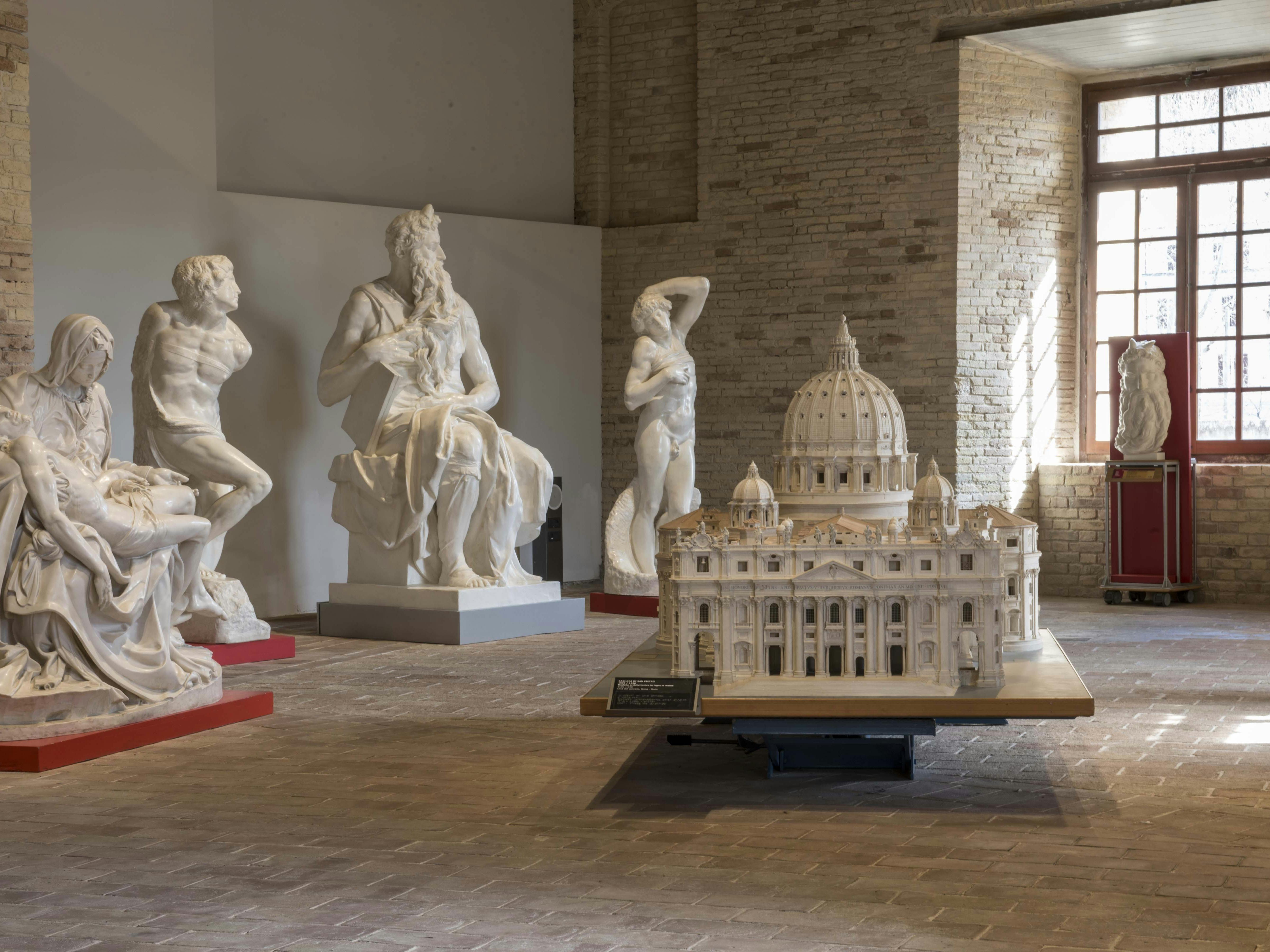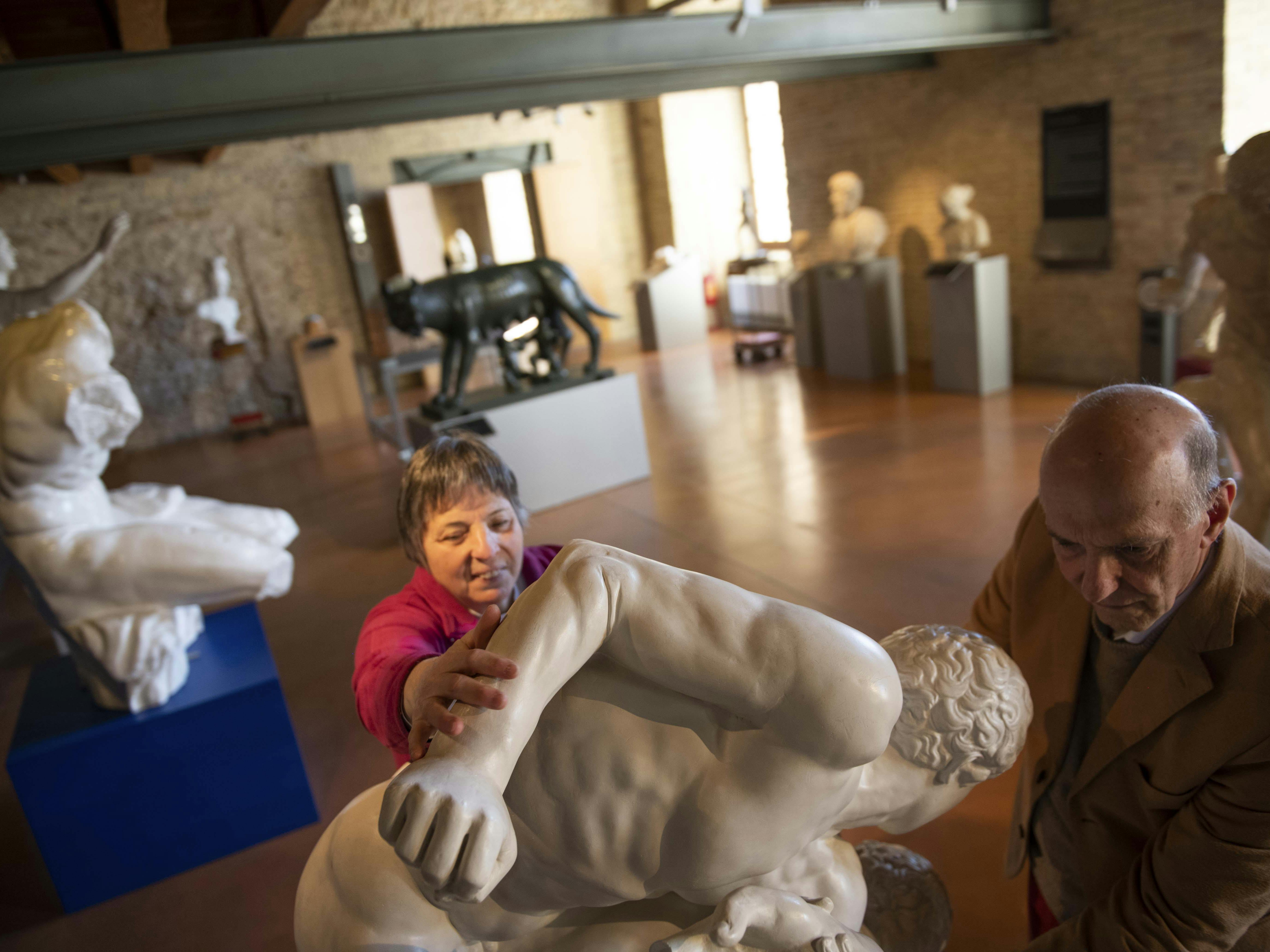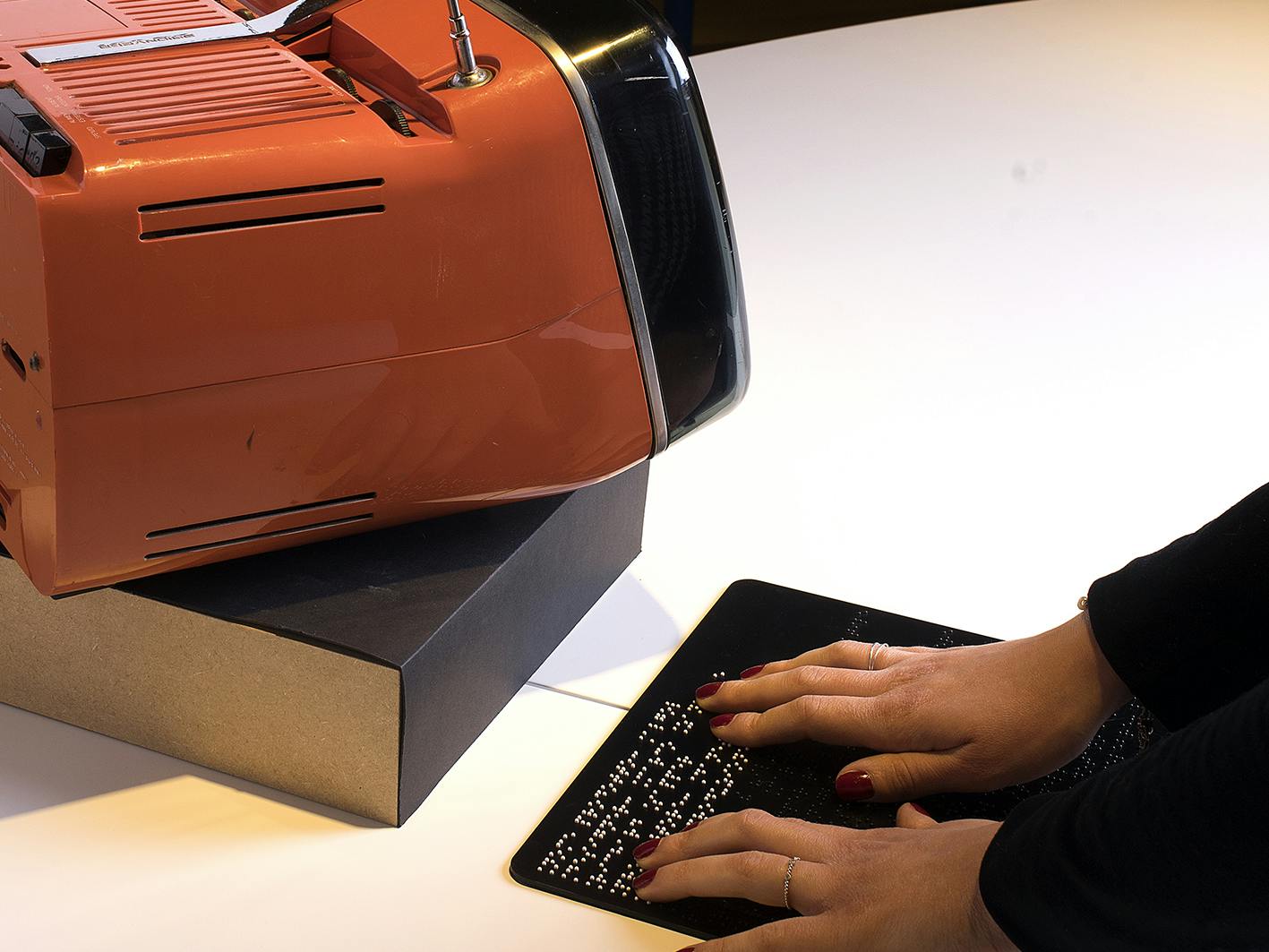
The State Tactile Museo Omero
Accessibility as a New Museological Culture
by Monica Bernacchia and Annalisa Trasatti
The State Tactile Museo Omero of Ancona is the only state tactile museum in the world. The institution offers the public the opportunity to experience art through touch. Tactility, long subjected to discrimination and rejection, has become a field of study and research at the museum.
Seeing with the hands is a necessity for people with visual disabilities, a discovery for everyone else. On one hand, the Museum has broken down a barrier that prevented blind and visually impaired people from enjoying art; on the other, it has allowed the entire audience to explore new aesthetic approaches to art: an important step towards a new multisensory museology.
A bit of history
The Museo Omero was born with accessibility in its DNA.
Between the intuition of its two founders, Aldo and Daniela – dating back to 1985 – and the actual foundation of the museum – which took place in 1993 – years were spent convincing institutions of the validity of an entirely tactile museum, based on replicas of sculptures and architectural models: at the time, a groundbreaking museal creation in the Italian and global landscape. After its opening, intense years followed to promote the educational and aesthetic value of a multisensory approach to art. The Museo Omero expanded, overcoming another taboo: allowing tactile interaction also with original contemporary art sculptures. Institutional recognition arrived in 1999, with the transition from a Civic to a State Museum. Since then, the Museum experiments, studies, innovates, and builds a solid and expert team specialized in welcoming people with visual disabilities. Meanwhile, it began sharing its wealth of knowledge through increasingly popular training courses. In 2012, the Museo Omero moved to its permanent location: the prestigious Mole Vanvitelliana.
Inside the museum
Today, visitors to the Museo Omero can establish a direct dialogue with works of art, made of shape and matter, temperature and texture. An essential dialogue for those who cannot see, surprising and novel for those who can. The Museum narrates the evolution of sculpture, architecture, and design through over two hundred works, offering a unique multisensory experience.
At the beginning, it is a tactile journey through the 'form' of Western civilization, from ancient Greece to Canova’s Neoclassicism. Plaster and resin replicas of famous sculptures, such as the Venus de Milo, the Capitoline She-wolf, and Michelangelo’s Saint Peter Piety, engage in dialogue with architectural models of the Parthenon, the Pantheon, and St. Peter’s Basilica.
From the 20
Finally, the journey becomes 'interaction' with the Design Collection, where visitors can experiment with 32 iconic objects that made Italian design history, such as the Moka Bialetti, the Bocca sofa, and the Valentine typewriter. The Design Collection was included in the ADI Design Index 2022.
More in-depth: the Museo Omero as a model of accessibility
In recent years, the theme of accessibility has taken on an increasingly central role in Italy as well, with the Museo Omero pioneering as a point of reference. Since its inception, every choice of the Museum has been driven by a founding principle: to make art understandable and accessible to the entire public. Aware that accessibility is an intention permeating every action, thought, and project, the Museum staff works daily to embed it in all activities: from selecting works that must be understandable and pleasant to touch, to organizing tactile exhibitions, designing guided tours and workshops, and producing printed and multimedia materials.
Spaces and tools for accessibility
The exhibition spaces are accessible to people with motor disabilities: the Museum offers two wheelchairs and the rooms are connected by elevators.
The exhibition path, which begins with the volumetric model of the Mole Vanvitelliana, is equipped with high-contrast black captions and Braille informational panels; along the route, movable platforms with steps allow tactile exploration of higher sculptures. Some works are narrated through Italian Sign Language (LIS) videos, accessible via NFC technology. For people on the autism spectrum who may require a calm and isolated environment, there is the Fuori tutti space within the Design collection; those who prefer hands-on activities can use special tables and chairs placed in the rooms.
The Museum provides: multilingual and Braille printed materials, free guides for families, also designed for children with neurodiversity, an Easy-to-Read and Understand Guide in Italian and English, a tactile map of the venue, accessible and multilingual audiodescriptions via audiopen, free consultation of the magazine Aisthesis and other materials.
For the Museum, accessibility primarily means hospitality, exercised daily with care and professionalism. For this reason, lifelong staff training remains a fundamental pillar to ensure a serene and engaging visit.
Digital accessibility
All content related to the collection and activities is available on the official website, representing a model of digital accessibility. Particular attention is paid to the language used to ensure a clear and inclusive storytelling of the works of art.
Multisensory exhibitions
The Museo Omero actively promotes a culture of accessibility through the organization of multisensory exhibitions such as Touching beauty. Maria Montessori and Bruno Munari, The culture of plastic: art, design, environment, The shadow sees by Enzo Cucchi, and the traveling section Beautiful and Accessible.
Tiflotechnical consulting and production
The Museum has specialized in producing aids for people with visual disabilities: Braille transcriptions, accessible audio guides, relief translations of two-dimensional images, raised drawings on microcapsule paper, tactile books, and tactile guides in various formats.




